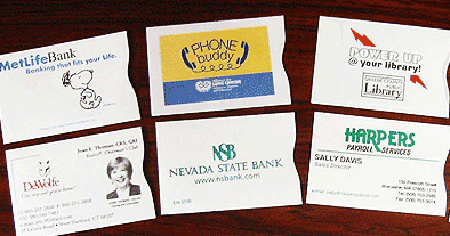
Public relations can be an effective way to generate awareness and name recognition for your business. PR is also considered to be a low-cost alternative to other marketing tactics such as traditional advertising and media buying. Your PR strategy should begin with the following key elements:
1. Build your target list: Compile an accurate database of key media contacts.
2. Develop your hook: Tell a compelling story.
3. Follow up: Cultivate relationships with the media and stay in touch.
Following are five steps to help you get good PR:
1. Turbo-charge your press releases
Your news releases should be newsworthy, targeted to the appropriate contact and, above all, engaging. Break through the clutter by enclosing something unique or creative (related to your business) with your release.
2. Maximize email marketing
Email marketing software has made it easier than ever to send out professional newsletters and press releases. User-friendly templates let you customize, target and track your email releases. It’s a low-cost way to stay top-of-mind with the media. Constant Contact offers low-cost do-it-yourself email marketing solutions, as do Bronto and Benchmark Email.
3. Make the media’s job easier
Tailor your pitch to the appropriate writer or reporter. If you’re not sure who to send your release to, call the newspaper, magazine, TV or radio station first and ask. Respect their time and deadlines. Have a press kit ready if the media ask for more info, but don’t flood them with sales materials. Give them what they need, when they need it, and you’ll increase your chances for positive press coverage.
4. Develop relationships with press contacts
Network with the media at industry events. Make an effort to get to know local reporters and leverage those relationships. Establish yourself as a resource to reporters and editors. Need to find reporters or editors? Burrells,Luce Media Contacts database lists 300,000 contacts at 60,000 media outlets (fees vary). Or use Google News to search for news articles with the name of your company, your competitors or your industry, as a way to build a list of names of reporters.
5. Start a blog
Establishing a company blog is low-cost way to position your business as a leader and an expert in your field. You can then direct the media to your blog and include the URL in your press releases and emails. Blogger and WordPress are free, easy-to-use blog publishing tool that can have you up and blogging in minutes. An alternate, low-cost blog publishing site is TypePad.
If you work to become a reliable and trusted source to the media – and if you provide them with real news – they will put you and your business in a positive light.
 Lou Bortone is an award-winning writer and video producer with over 20 years experience in marketing, branding and promotion. As an online video expert, Lou helps entrepreneurs create video for the web at www.TheOnlineVideoGuy.com. In addition, Lou works as a freelance writer and professional ghostwriter, with a ghostwriting site at www.GhostwriteForYou.com and a blog at www.GhostwriteGuru.com.
Lou Bortone is an award-winning writer and video producer with over 20 years experience in marketing, branding and promotion. As an online video expert, Lou helps entrepreneurs create video for the web at www.TheOnlineVideoGuy.com. In addition, Lou works as a freelance writer and professional ghostwriter, with a ghostwriting site at www.GhostwriteForYou.com and a blog at www.GhostwriteGuru.com.
Category: Sales & Marketing
How to identify who is – and more importantly, who isn’t!
“I don’t know the key to success, but the key to failure
is trying to please everybody.” — Bill Cosby
Have you ever had clients that were more trouble than they were worth? Maybe they were always late to pay, or didn’t do what they said they’d do. Maybe you just had a personality clash, or they expected more than you were able to offer. Whatever the situation, chances are you had an inkling when you first met that client…a tiny voice that you didn’t listen to, that was probably overshadowed by the bigger voice that said, “Hey, it’s business; I’ll take it!”
Drawing The Line
Learn to say no to those clients, before they start draining your energy! The key to being able to do this is to understand Your Ideal Client. Once you know how to recognize who is ideal and who is not, you can practice turning down business from the latter. If you have trouble saying no, you’ll need to learn this critical business skill, and what to do to get rid of problem clients you already have; see the resources at the bottom of this article. If you have a coach, ask them to help you complete the Ideal Client exercise, or to role-play those “saying no” conversations.
How to Discover YOUR Ideal Client
There are many ways to approach the Ideal Client/Customer Profile. You can sit down and imagine the best, most wonderful client you could have–whether that is an abstract entity, a celebrity (what writer wouldn’t want Oprah as a customer, for example), or a specific demographic profile. If your customers are more likely to be companies, you could look at your current client list, and pick the company that gives you the most business, the most joy, the least heartburn.
The Ideal Client Profile
Whoever you pick, start a profile matrix with two columns: “My Ideal Client Is:” on the left; “My Ideal Client is Not:”, on the right. In the column on the left, list all the characteristics of that type of person or company. Use the questions below as prompts to get you thinking about all the different aspects of each client.
Then, either think of the opposite of all those aspects, or pick the “client from hell” and fill in corresponding traits in the right-hand column. Be really honest with this exercise! If you’d rather only have clients who make over $500,000, put that down! Your clients who don’t fit your Ideal characteristics, whether you write them down or not, will eventually know it. May as well get that over with early!
Prompts: Consider these aspects of your Ideal Customer or Client:
- What career or business are they in?
- What demographics do they fit? (age, sex, race, religion, income, marital status, etc.)
- What do they think is important in business? In life?
- What do they like most about you and your business, products and services?
- What is the nature of their relationship with you? (transactional, long-time customer, acquaintance, friend, refers others to you, etc.)
- How do they do business with you? (by phone, in person, on the Web; quick transactions, takes time to negotiate; pays early, on-time, at 30 days; etc.)
- What personality characteristics do they have?
- What do you get from them (besides payment)?
Now What?
Compare your current client list to the two columns in The Ideal Client Profile. How many have the characteristics of your Ideal Client? If the answer is “not many,” you may need to work on firing some of your clients! Check out some resources below on how to do this.
Next, post your Ideal Client Profile somewhere you will see it often. Every time a new potential client comes along, start looking for those Ideal characteristics…and beware the non-ideal! If that little voice starts to tell you something might be wrong, check in with the non-ideal list–and be ready with some ways to turn away non-ideal clients. Offer them other options–refer them to someone else who is a better fit, and make two people happier!
Ideal Clients–For Life
There are many ways to leverage the work you have just done with the Ideal Client Profile. Here are some ideas:
- Audit your marketing materials. Do your business cards, brochures, ads and website appeal to your Ideal Client? Are you sending the right message, to the right potential clients? Hone your materials, and start seeing better-qualified potential clients walk in the door.
- Consider your marketing channels. Based on your Ideal Client profile, where would you expect to find these clients? Is that where your marketing efforts are focused? If not, figure out a way to get in front of them!
- Review your contracts, policies, terms and conditions. Are they set up to be friendly to your Ideal Clients? Do they give you clear avenues for dealing with non-ideal clients? If not, update them, and you might see non-ideal clients take care of themselves.
Start attracting your Ideal Clients today!

Most sales people know that they need to develop a relationship with their clients. If they don’t know this in today’s society and business climate, then they are probably living in a coal mine in Tibet. However, what they may have difficulty with is knowing what to do to develop that relationship and how to do it. Sales training and a sales process are the keys to knowing the “how”.
The “what” to do is addressed by a CRM (Customer Relationship Management) strategy combined with CRM technology. This strategy and technology combination helps sales reps with knowing what they need to do next in order to move the relationship forward. For instance, given the right contacts at an account, they may need to establish a meeting with the decision maker, schedule a demonstration, and develop a proposal. However, these are just the mechanics of a sales process – the “what” to do for each step of the way.
While the mechanics are critical to the sales process, what they don’t address is the “how”. How do sales reps reach the decision makers to set up a meeting? How do they develop the best solutions-based proposal? How do they demonstrate the product in a fashion that reveals the best solutions to the prospect’s problems? The way to build a relationship with a client is to learn the “how” of selling, which is obtained through sales training. Sales training comes in many shapes and forms, but the best ones are those that follow a process. Each step of the process moves the relationship one step closer to a win-win solution and encapsulates the selling skills necessary within each step.
A basic flaw in many sales rep’s style is to try to solve the client’s problems by educating them with a product pitch. Customers, especially decision makers, are not interested in the technical details. What they need to understand is how your solution will fix their problems and remove their pains. What often happens is that sales reps tend to make these product pitches to lower-level employees who are not the decision makers. Obviously, this wastes everyone’s time. What needs to be done instead is to focus more on asking the right questions, listening carefully to what the client is saying (and implying), developing the right solution using your products or services, and presenting those solutions as they directly relate to the client’s problems, all done with the right decision maker.
Each of these steps, and more, are learned processes and skills. The saying, “Good sales people are born, not made” is false. Selling is a science, not an art. With proper sales training and a solid sales process, nearly anyone can become a successful sales professional. So what does a good process look like and what are the skills needed for each step?
Let’s look at one in particular, the PEAK Sales Process. PEAK is an acronym, which stands for: Prospect, Engage, Acquire, and Keep. This pyramid diagram below depicts the steps in the PEAK Sales Process where each step builds upon the prior.
Step one, Prospect, is where the initial contact is made which involves cold calling in order to find a candidate client. At this point, this is really just a raw lead rather than a qualified prospect. Here, the training would involve how to make cold calls, your attitude, the first impression you make, and the approach you make during the first phone call or meeting. Once you’ve prospected and found a candidate, you need to Engage them in the process of the sale. This training involves learning how to qualify what is now considered to be a suspect by asking the right questions and listening carefully to their responses. Listening skills are paramount at this stage since the next steps in the process are based on what information is discovered in this engagement stage.
The goal of the engagement stage is to understand the client’s problems and requirements in order to match the right solution to their needs. As a result of good questioning and listening, the sales rep will not only understand this critical information, but they will also ensure that the suspect is fully qualified. To be qualified, the client must have a budget, have the authority to make the decision or at least introduce you to the decision maker(s), have requirements for which you have good solutions, and be able to make a decision and purchase within a reasonable timeframe.
Once qualified, the next stage is where you Acquire them as a new client. This involves moving them from being a suspect to a prospect. In the acquisition stage, the sales rep presents and proposes their solution, negotiates with the client, handles objections, and closes the sale. If the prior stages were handled correctly, then this stage becomes much easier since the client’s needs are fully understood, they basically told the sales rep what they need, the sales rep’s trust and credibility should already be established, and the close becomes a natural progression of the process, as opposed to the typical “dreaded event” that most sales reps fear and loath. Hence, the goal of the acquisition stage is to get the prospect to become a customer.
The final stage is where we Keep the customer. This is where they become a full-fledged customer and when the relationship is most important. Unfortunately, many companies do not have a customer retention strategy and lose the long-term relationship, and hence any forthcoming business potential. An on-going relationship after the sale is critical to your future business and viability. There are several steps and skills necessary to ensure this relationship continues and to make sure your customer becomes, and remains, loyal to your business.
Having a clearly defined sales process with specific skill sets for each stage will ensure that your sales reps will replicate their successes and become more consistent and effective. Regrettably, many sales reps are not trained or experienced with these skills, nor do they perform them in the right order because there is no process. They ask the prospect questions when they should be closing or they try to close when they should be qualifying or they do a myriad of other actions at the wrong stage of the sales cycle. Performing the right actions at the right stages of the process is the key to successful selling.
With proper sales training and a first-rate sales process, your sales team will not only learn the appropriate skills but also when and where to apply them to become more successful. Thus, they will learn “How” to sell better. Combine this with “What” to do by developing a CRM strategy and using CRM technology, and you’ll have an unbeatable, world-class sales team.
 Russ Lombardo is President of PEAK Sales Consulting, LLC and an experienced CRM and Sales consultant, trainer, writer, speaker and radio show host. Russ works with businesses to help improve their customer acquisition and retention for increased revenue and success. Russ is author of the books, “CyberSelling”, “CRM For The Common Man” and “Smart Marketing”. He can be reached at 702-655-5652 and emailed at russ@peaksalesconsulting.com.
Russ Lombardo is President of PEAK Sales Consulting, LLC and an experienced CRM and Sales consultant, trainer, writer, speaker and radio show host. Russ works with businesses to help improve their customer acquisition and retention for increased revenue and success. Russ is author of the books, “CyberSelling”, “CRM For The Common Man” and “Smart Marketing”. He can be reached at 702-655-5652 and emailed at russ@peaksalesconsulting.com.

Using Your (small) Size as a Competitive Advantage
Are you ever frustrated or hesitant when you talk to prospective customers because you can’t readily explain why they should come to you rather than go to your competitors? Sure, you might have your 30-second elevator speech, but then they ask you that dreaded question, “So what makes you different?” Then, all those self-doubts creep in, and you just aren’t sure what to say. Differentiation can boost confidence–yours in yourself and that prospective customer’s confidence in you!
Dif-fer-en-ti-ate v. tr. To perceive or show the difference in or between; discriminate.
In business terms, to differentiate means to create a benefit that customers perceive as being of greater value to them than what they can get elsewhere. It’s not enough for you to be different–a potential customer has to take note of the difference and must feel that the difference somehow fits their need better. (Other words that mean virtually the same thing: Competitive Advantage; Unique Selling Proposition; or Value Proposition.)
As you are building your business, you can use differentiation to attract more customers. Once you have momentum, differentiation allows you to charge a higher price because you are delivering more value to your customers. Make a point to evaluate and adjust your differentiation methods at least annually.
The various methods of differentiating your businesses fall into four general categories:
Price Differentiation
Focus Differentiation
Product/Service Differentiation
Customer Service Differentiation
Price Differentiation
Differentiating on price is probably the most common and easily understood method. HOWEVER, for Solo Entrepreneurs, caution is in order. On the one hand, potential customers might expect a lower price from you than from your larger competition because they perceive you as having less overhead, etc. On the other hand, cheaper prices can evoke perceptions of lower quality, a less-stable business, etc. And if you compete on price against competitors with deeper pockets, you can price yourself right into bankruptcy. Be creative with this differentiator by competing on something other than straight price. For example, you might offer:
- More value–offer more products or services for the same price.
- Freebies –accessories, companion products, free upgrades, and coupons for future purchases.
- Free shipping, etc.–convenience sells, especially when it is free!
- Discounts–includes offering regular sales, coupons, etc. (see cautions above)
Focus Differentiation
For Solo Entrepreneurs, this is the most important method of differentiation, and in many ways, the easiest. Why? Because as a Solo Entrepreneur, you simply can’t be everything to everybody, so you must pick a specific way to focus your business. Once you have done that, you have an automatic advantage over larger companies because you can become more of an expert in that one field –and you can build close relationships with key customers that will be hard to duplicate. For example, you might differentiate yourself through:
- Location–take advantage your closeness to prospective customers.
- Customer specialization–be very specific about what characteristics your customers will have – for example, racing bicycle enthusiasts or companies with a spiritual conscience.
- Customer relationships–know customers really well, form partnerships with them, and get them to speak for you!
- Affinity relationships–associate your product/service with a well-known person or organization.
- One-stop shopping–offer everything your target market needs, in your area of expertise.
- Wide selection (within your niche) – although this one may seem to be the opposite of focus–the key is to be very specific in one dimension and very broad in another.
Product/Service Offering Differentiation
How much you are able to differentiate your product or service offering will vary based on what type of business you are in. For instance, if you are in a highly regulated business, your options may be limited. Explore a totally new market or type of product or service, however, and the possibilities abound. The key to successful differentiation in this category, again, is to know your customers, really, really well. Talk to them often, and you will know what they need most and be able to offer it, long before your competitors know what is happening. For example, your product or service could stand out in one of these ways:
- Quality–create a product or service that is exceptional in one or more ways.
- Lasts longer
- Better features
- Easier to use
- Safer
- New/First–be the first one to offer something in your location/field.
- Features/Options–offer lots of choices, unusual combinations, or solve a problem for a customer in a way no one else does.
- Customization–as a Solo Entrepreneur, you may be able to more easily handle special orders than big, mass-market competitors.
Customer Service Differentiation
Have you noticed how customer service seems to be out of vogue these days? This situation makes excellent customer service a great opportunity for differentiation and another natural advantage for Solo Entrepreneurs that already know what’s important to their customers. Build your reputation on making customers feel really good about doing business with you. Works great with referral marketing, too. Examples:
-
Deliver Fast–next day, or one-hour–make it faster than customers think possible.
-
Unique channel–offer a service over the phone or Internet instead of in person or in their office rather than yours.
-
Service-delight customers!–it may seem expensive to offer exceptional service–but it pays off in word-of-mouth advertising.
-
Before/during/after-sales support–provide technical or other support to customers using your product. You might use joint ventures to provide that support–but customers will perceive it as being from you!
-
Guarantee/warranty–offer 100% money-back, or free replacement parts.
-
YOU–offer yourself, your unique blend of talents and skills, to attract customers. Make sure they get access to you, too!
Keys to Successful Differentiation:
-
Know your customers, really, really well.
-
Pick a blend of differentiation methods that, in the eyes of your customers, truly sets you apart.
-
Talk about your differentiation in terms of customer benefits.
-
Tell everyone about what differentiates you–often.
-
Keep your differentiation fresh by listening for changing customer needs.
Educate Your Customers

AllBusiness.com: I remember as a young college kid (yeah, I’m old enough to say that now), I worked in a ski and patio furniture store (it was the Midwest so skiing in the winter, patio furniture in the summer). What I learned quickly in selling the goods was that most people had no working knowledge of skiing or patio furniture and it came down to a price game with our competitors.
So I educated them first and foremost about patio furniture. I explained why an aluminum frame was better, how powder coating lasted longer than any other finish, and why the manufacturer felt comfortable offering a five year warranty.
So customers weren’t given the hard sell, but an education. And that invariably turned into customers checking out the competition and then almost always coming back to us to buy (even if another store was selling the same thing). Here are a few ways you can better educate your customers.
Touch each customer while they’re in your store – spend a little time explaining why a certain product or brand is unique or better than everything else that’s out there (or teach about the entire category (biking, skiing, patio furniture, etc.)).
Host a special event – It doesn’t have to be sales-oriented. Create educational events and the sales will follow.
Use your database and email – I’m a big proponent of emails that aren’t about selling something, but about educating someone. What’s relevant to your customer base? Speak to that and include the selling part as a mention at the end. For instance, you may want to educate your customers about sunscreen and the importance of wearing it. And then at the end just add, “here are three products we recommend.”
Educate Your Customers to Increase Sales [AllBusiness.com]